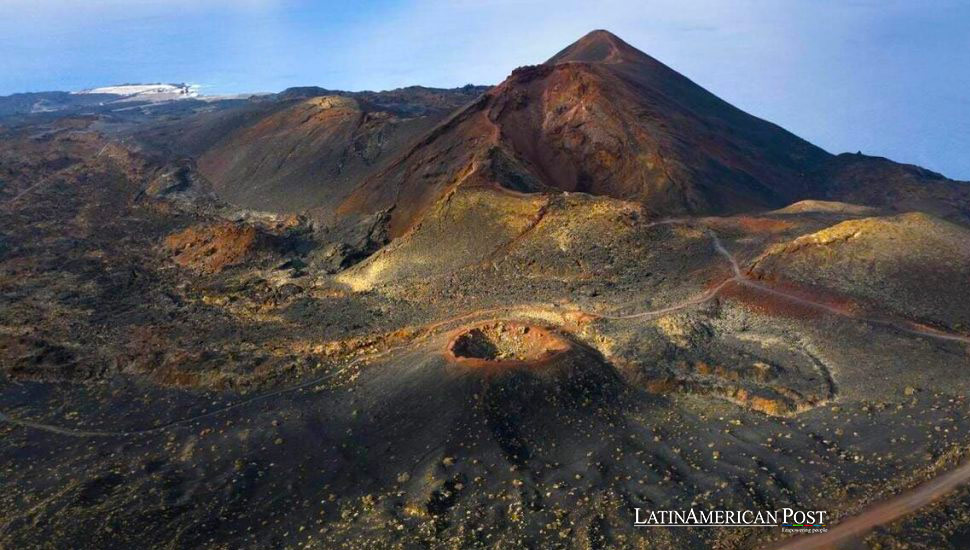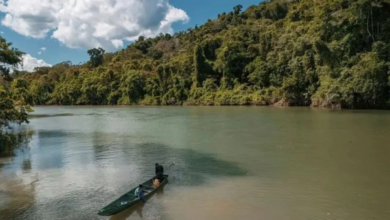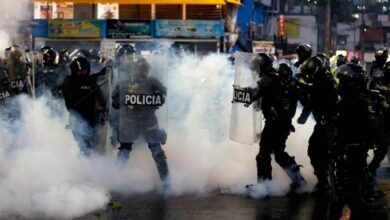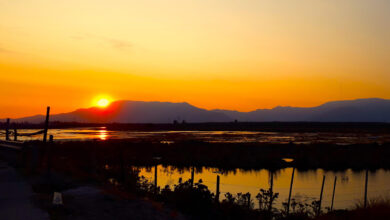Exploring the Richness of Volcanism: Ecuador and Canary Islands Under the Lens

A pioneering study comparing Ecuador’s and the Canary Islands’ volcanism seeks to prove the greater diversity and richness of insular volcanic landscapes over continental ones. For instance, insular volcanism often results in the formation of unique landforms such as volcanic islands, while continental volcanism is more likely to create large mountain ranges.
A groundbreaking collaborative study between the University of La Laguna, a renowned institution with a strong focus on earth sciences, in the Canary Islands and the University of Minho, a leading research university in Portugal, is set to deepen our understanding of volcanic diversity. Directed by Francisco Javier Dóniz and José Rodrigues, this research aims to showcase the superior richness and geodiversity of island volcanism compared to its continental counterpart.
Lisbeth Alexandra Oña, a geographer spearheading the project under the supervision of both universities, has been stationed in Tenerife, Canary Islands, for several months. Her task involves characterizing selected geocomposites on the island to compare them with those studied earlier in Ecuador’s volcanoes.
The University of La Laguna recently highlighted that this comparative analysis would help determine which geodynamic context—insular or continental—holds more potential for developing or geological tourism. “We start from the idea that insular volcanism is much richer and diverse than continental volcanism, something we aim to demonstrate through this study,” stated Francisco Javier Dóniz.
Volcanic Wonders: A Comparative Study
The significance of this research lies in its comprehensive scope, encompassing several Ecuadorian volcanoes led by Tungurahua, located in Ecuador’s eastern cordillera. Here, 28 morphosites have been identified and described. In Tenerife, notable sites like Teide, Pico Viejo, Los Gigantes cliffs, Los Caballos ravine, Punta del Hidalgo, Masca, Malpaís de Güímar, and Chinyero have been analyzed for their high geotouristic value.
Lisbeth Alexandra Oña explained that Tenerife was chosen because its active volcanoes share similar characteristics with Tungurahua, whose last eruption occurred in February 2016. “For a meaningful comparison, similarities were essential. We’ve observed that insular volcanism, unlike in Ecuador where glaciation occurs, boasts greater form and process diversity,” she detailed.
The selection and categorization of a geocomposite, a location of scientific, socio-economic, aesthetic, and cultural significance, require three essential characteristics: representativeness, conservation, and accessibility. “If a site is inaccessible, it’s unlikely to be oriented towards tourism. Similarly, if it’s deteriorated or has lost certain values, it won’t serve the purpose,” noted Dóniz.
One of the project’s ambitious goals, financed by EU funds through the Pangea program, is to ignite the circular economy in Ecuador by establishing a geopark in the Tungurahua area. “This vision is pivotal for developing countries with significant inequalities, particularly in central Ecuador, where inequity is most concentrated. Pursuing this direction could lead to entrepreneurial ventures based on existing volcanism, such as implementing georoute designs,” Oña remarked with optimism.
Achieving geopark status for these Ecuadorian volcanoes, a distinction endorsed by UNESCO, would bestow a mark of excellence, boosting tourism development in that region. Specifically, it would foster geotourism, a sustainable and environmentally respectful tourism model. “In the Canary Islands, we have extensive experience with geotourism and geoparks, having two of the four volcanic geoparks in Spain,” added Dóniz.
Geotourism: A Sustainable Future
Geotourism has gained traction globally as an avenue for sustainable tourism. It emphasizes preserving natural geological features while promoting public education and awareness. The Canary Islands, with their rich volcanic heritage, serve as an exemplary model of how geotourism can be successfully integrated into local economies. Geotourism not only attracts visitors but also educates them about the geological processes that have shaped the landscape, fostering a deeper appreciation for the environment and a commitment to its preservation.
The experience in the Canary Islands, particularly with El Hierro and Lanzarote as recognized geoparks, illustrates the potential benefits for Ecuador. These include increased tourist footfall, preservation of natural sites, and the creation of educational programs that enhance visitor understanding of geological processes.
Once the current research in Tenerife concludes, building on fieldwork initiated in four Ecuadorian volcanoes earlier in 2024, the findings will be presented at the First Ibero-American Meeting on Geomorphological Heritage. This global conference, organized by the University of Santiago de Compostela, is a prestigious platform for sharing research on geological heritage and is scheduled for September.
In addition to presenting their findings at this international expert conclave, the universities of La Laguna and Minho will coordinate and oversee the publication of an article on the project’s results in high-impact scientific journals. “This is the first time a comparative study of this nature has been undertaken, and we aim to achieve greater international projection,” the researchers stated.
This study’s implications extend beyond Ecuador and the Canary Islands, offering insights relevant to Latin America’s broader geological and environmental contexts. The region has numerous volcanoes, each presenting unique opportunities and challenges for geotourism and sustainable development.
Historically, Latin American countries have experienced both the devastating effects of volcanic eruptions and the benefits of volcanic soil for agriculture. Recognizing and preserving geological heritage through initiatives like this can contribute to economic development, education, and environmental conservation.
The Role of Geoparks
Geoparks play a vital role in these efforts. By obtaining UNESCO recognition, which is a prestigious international endorsement, regions can attract global attention and funding, support local economies, and foster a sense of pride and stewardship among residents. Establishing geoparks in Ecuador could mirror the success seen in the Canary Islands, where local communities benefit from increased tourism and related economic activities.
The comparative study of insular and continental volcanism spearheaded by the University of La Laguna and the University of Minho represents a significant step forward in understanding volcanic diversity. By highlighting the richness and potential of insular volcanism, this research advances scientific knowledge and offers practical applications for tourism and sustainable development.
Also read: Ecuador’s Biodiversity Efforts Bolstered by New Biobank Network
As the findings are shared with the global scientific community and local stakeholders, the hope is to inspire similar initiatives across Latin America and beyond. By recognizing and leveraging their geological heritage, countries can promote sustainable tourism, economic development, and environmental conservation, ensuring that these natural wonders are preserved and appreciated for future generations.





